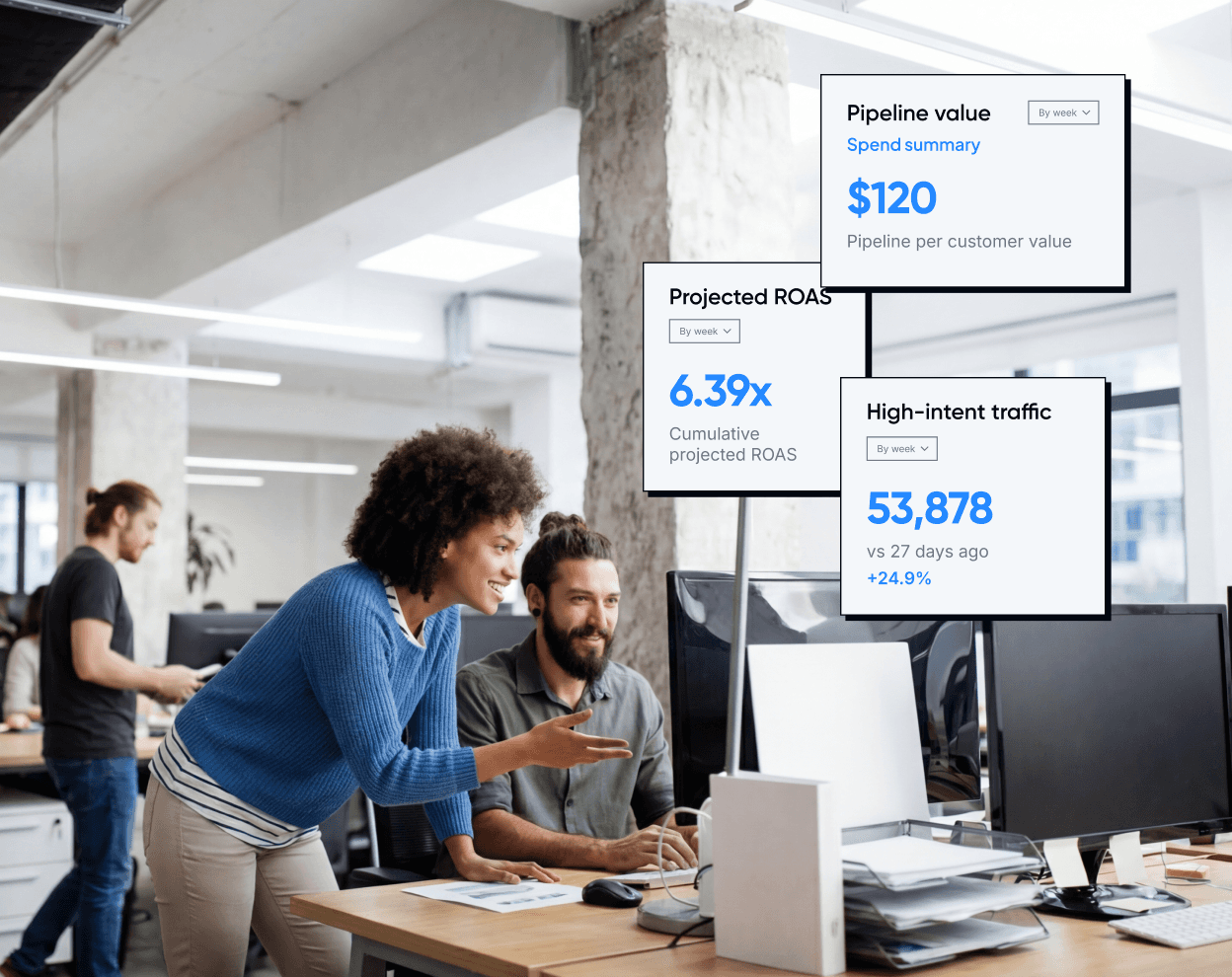Over the past twenty years, online advertising has opened thousands of new channels and methods for brands to reach their target customers. While each digital marketer must find the right marketing mix for their company, programmatic ads have become a staple of modern advertising strategies.
But what is programmatic advertising? How does it work? What are its benefits, and what are its problems? How can you start a programmatic advertising campaign?
Review our complete guide to learn more about the tool, which saves marketers time and continually optimizes the advertising process.
WHAT IS PROGRAMMATIC ADVERTISING?
Programmatic advertising uses software, rather than humans, to buy online ads. Traditional advertising media buying involves negotiation for predetermined ad space. Programmatic advertising eliminates the tedious traditional ad-buying process by using highly effective, efficient technology to do the most repetitive aspects of the task. The results are highly-targeted, cost-efficient ads across the open internet.
In 2021, 87% of digital display ads were purchased using programmatically. Programmatic ad campaigns can be found on various platforms, including connected TV, mobile devices, video content, social media, and more. Video ads are one of the largest areas of programmatic ad growth, making up more than half of programmatic ad spend and growing to more than $96B in spending by 2025.
WHAT ARE THE BENEFITS OF PROGRAMMATIC ADVERTISING?
Clearly, programmatic advertising is part of the future of marketing. But what makes it so popular? And how can it help your business?
Programmatic marketing offers a wealth of benefits, including:
Efficient ad-buying process, which gives marketers more time to optimize ads
Extremely cost-effective
Precisely targeted audiences
Increased return on investment (ROI)
Detailed data that can be used to optimize ads and understand your customer base
Easy scaling
Quick launch time for any ad campaign
Ease of creating ad campaigns across multiple platforms at once
HOW DOES PROGRAMMATIC ADVERTISING WORK?
First, advertisers use programmatic software to bid on website ad impressions automatically. The highest bidder (CPM) earns the ad impression space, and the website shows the ad to the website visitor. This entire process involves precise automation and happens in fractions of a second.
Programmatic platforms use artificial intelligence and advanced algorithms to analyze the user’s website activity and optimize the campaign in real-time. If all goes well, the user clicks on the ad and does whatever it asks them to do (conversion).
Marketers can review the ad impression data to optimize future ads further. This whole process works for both first-party and third-party ads.
There are four typical ways to buy programmatic ads.
Open Marketplace: Ads are bid on and sold by anybody across the open internet. This process is known as real-time bidding (RTB).
Private Marketplace: Ads on a site or platform are by invite only. This usually means premium or brand-specific inventory.
Preferred Deals: Advertisers and publishers agree to terms to give certain advertisers priority placement.
Programmatic Guaranteed: Ads will reach a guaranteed number of impressions. The price is fixed, so no bidding is done.
PROGRAMMATIC ADVERTISING PLATFORMS
Programmatic ads are everywhere, from retail websites to social media platforms and apps. Most advertisers use one of five types of platforms to buy programmatic ads, including:
Ad servers: Ad agencies and networks use ad servers to build and manage digital ads of all types. The server automatically decides which ads to run on which website and then delivers data about impressions, conversions, and more.
Supply-side platforms (SSPs): Website owners, app owners, and bloggers use SSPs to sell their ad space to advertisers. This allows them to monetize their digital content by displaying various ads on their sites or apps.
Demand-side platforms (DSPs): Advertisers who want to buy ad space from multiple websites or apps at once can use a DSP. DSPs have been compared to the stock market, where advertisers use real-time bidding to buy ad space.
Ad networks: Ad networks take unsold ad space from across the web and sell it to advertisers at a discounted rate.
Data management platforms (DMP): This type of ad platform collects data from publishers and ad campaigns to help advertisers improve their targeting.
HOW TO START USING PROGRAMMATIC ADS
A successful programmatic marketing strategy begins with the end in mind. First, define your campaign goals. Do you want to lower ad spend, increase conversion, or maximize impressions?
Then, it’s time to select the programmatic ad campaign you want to run. You have a wide range of options, from banner ads to social media video content.
Once you’ve decided on a campaign type, you’ll need to choose a DSP. This will allow you to launch and optimize your ad.
PROBLEMS WITH PROGRAMMATIC ADVERTISING
While programmatic technology is still developing and improving, problems, including lack of transparency and increasing complexity, have led many advertisers to deemphasize it in their marketing strategy.
For many, it’s a channel reserved for “brand awareness.” 39% of marketers say transparency is one of the main problems with programmatic advertising. They simply don’t know what they’re getting for their money.
PRECISION BRAND ADVERTISING - THE NEXT EVOLUTION IN DIGITAL ADVERTISING
Programmatic advertising, powerful as it may be, is now old news. Precision brand advertising takes the black box of programmatic marketing and offers new visibility into the metrics and results you care about.
Precision brand advertising uses display advertising in conjunction with other mediums, including native ads, audio ads, OTT, CTV, and DOOH, to create a cohesive multi-channel advertising experience designed to drive measurable conversions. Agility is leading the way with precision brand advertising, reducing brands' CPA and CAC, and boosting ROAS and CMAM. See how precision brand advertising can help your marketing strategy.
Share in...





